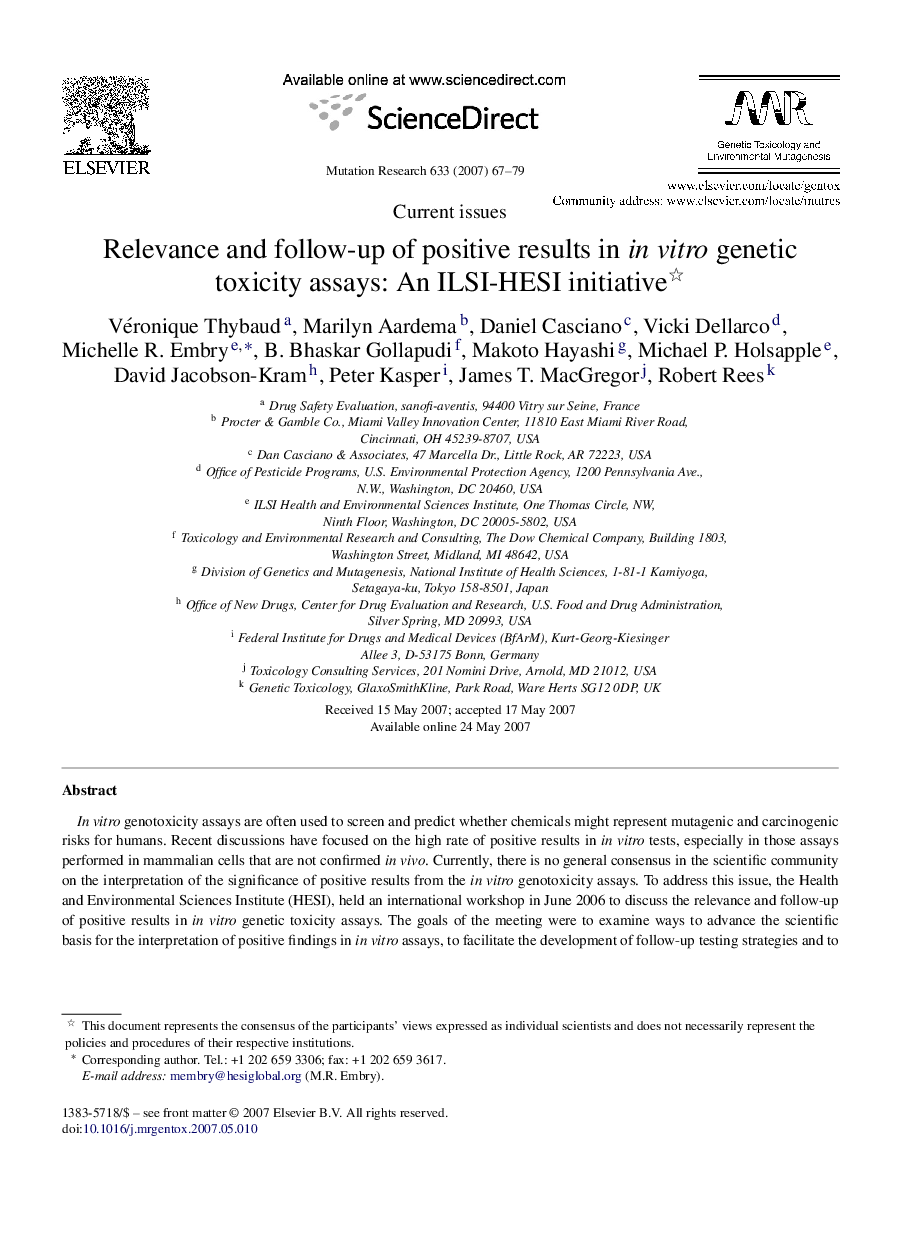| کد مقاله | کد نشریه | سال انتشار | مقاله انگلیسی | نسخه تمام متن |
|---|---|---|---|---|
| 2149115 | 1089599 | 2007 | 13 صفحه PDF | دانلود رایگان |

In vitro genotoxicity assays are often used to screen and predict whether chemicals might represent mutagenic and carcinogenic risks for humans. Recent discussions have focused on the high rate of positive results in in vitro tests, especially in those assays performed in mammalian cells that are not confirmed in vivo. Currently, there is no general consensus in the scientific community on the interpretation of the significance of positive results from the in vitro genotoxicity assays. To address this issue, the Health and Environmental Sciences Institute (HESI), held an international workshop in June 2006 to discuss the relevance and follow-up of positive results in in vitro genetic toxicity assays. The goals of the meeting were to examine ways to advance the scientific basis for the interpretation of positive findings in in vitro assays, to facilitate the development of follow-up testing strategies and to define criteria for determining the relevance to human health. The workshop identified specific needs in two general categories, i.e., improved testing and improved data interpretation and risk assessment. Recommendations to improve testing included: (1) re-examine the maximum level of cytotoxicity currently required for in vitro tests; (2) re-examine the upper limit concentration for in vitro mammalian studies; (3) develop improved testing strategies using current in vitro assays; (4) define criteria to guide selection of the appropriate follow-up in vivo studies; (5) develop new and more predictive in vitro and in vivo tests. Recommendations for improving interpretation and assessment included: (1) examine the suitability of applying the threshold of toxicological concern concepts to genotoxicity data; (2) develop a structured weight of evidence approach for assessing genotoxic/carcinogenic hazard; and (3) re-examine in vitro and in vivo correlations qualitatively and quantitatively. Conclusions from the workshop highlighted a willingness of scientists from various sectors to change and improve the current paradigm and move from a hazard identification approach to a “realistic” risk-based approach that incorporates information on mechanism of action, kinetics, and human exposure..
Journal: Mutation Research/Genetic Toxicology and Environmental Mutagenesis - Volume 633, Issue 2, 4 October 2007, Pages 67–79